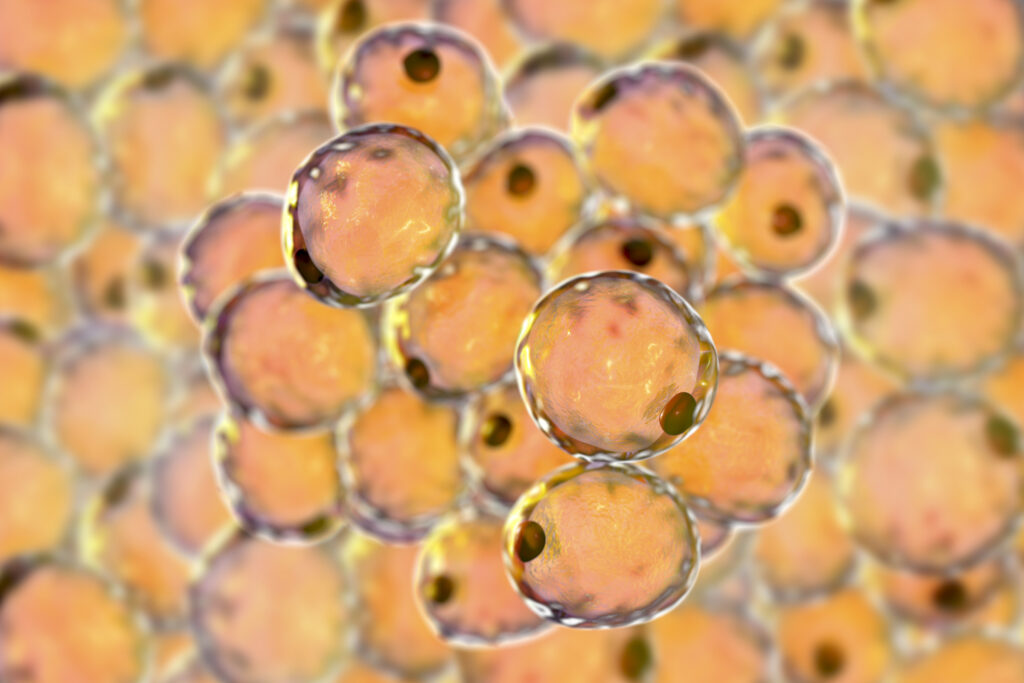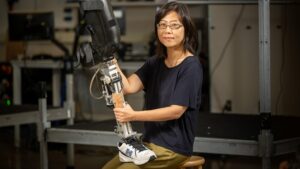
Fat cells, or adipose cells, 3D illustration
A recent study published in Nature Communications reveals significant insights into how fat tissue influences the spread of ovarian cancer. Researchers from Karolinska Institutet and Queen Mary University of London found that the physical structure of visceral fat plays a crucial role in the invasion of cancer cells. This discovery opens new avenues for potential treatment strategies against this aggressive form of cancer.
Ovarian cancer is notorious for its rapid dissemination, often targeting fatty tissues within the abdomen. The study highlights that it is not only biochemical signals that facilitate this invasion; rather, the mechanical properties of fat tissue significantly contribute as well. The research team demonstrated that ovarian cancer cells utilize the soft and crowded nature of visceral fat to move swiftly and efficiently through the body.
The team identified that the large size and deformability of fat cells create what they termed “migration highways” for cancer cells. Such pathways allow these cells to navigate through constricted areas without damaging their nuclei, a critical factor for their survival and proliferation. According to Jordi Gonzalez Molina, first author of the study and research specialist at the Department of Microbiology, Tumor and Cell Biology at Karolinska Institutet, “Our study reveals how ovarian cancer cells exploit the unique physical properties of fat tissue to spread aggressively.”
These findings are significant, as they suggest that two key factors—cancer cell-induced adipocyte deformations and large adipocyte size—correlate with more aggressive tumor behavior in patients. The research utilized advanced bioengineered models that closely replicate the structure of fat tissue, along with patient-derived samples. This innovative approach allowed researchers to isolate how specific characteristics, such as fat cell size and tissue mechanics, impact cancer cell movement.
New Directions for Cancer Research
Professor Kaisa Lehti, a researcher at the Department of Microbiology, Tumor and Cell Biology at Karolinska Institutet and the Norwegian University of Science and Technology, emphasized the broader implications of this research. “Our newly engineered fat-mimicking platform opens doors to study other fat-linked cancers such as leukemia, breast cancer, and gastric cancer,” she noted. This shift in perspective from solely targeting cancer cells to also manipulating their physical environments could transform strategies for combating metastasis in tumors associated with fat tissue.
The research team intends to further investigate the interactions between cancer cells and other cell types, including fibroblasts and immune cells, during fat tissue invasion. They aim to explore how cancer cells induce fibrotic transformations in fat tissue, a process often linked to treatment resistance.
The collaborative effort involved teams from both Karolinska Institutet and Queen Mary University of London, including contributions from Associate Professor Sahar Salehi and Assistant Professor Twana Alkasalias at the Karolinska Institute. Their collective work has laid the groundwork for future studies that may lead to more effective treatments for ovarian cancer and potentially other cancers tied to fat tissue.
The study, titled “Biomimetic organo-hydrogels reveal the adipose tissue local mechanical anisotropy regulates ovarian cancer invasion,” was published in March 2025. The continued research in this area promises to enhance our understanding of cancer metastasis and may lead to innovative therapeutic approaches.






